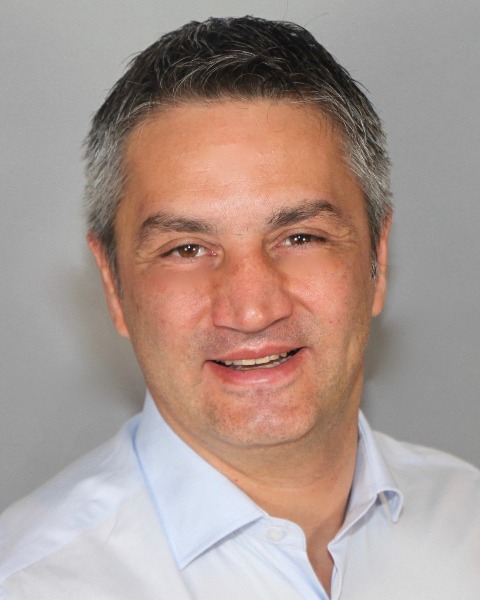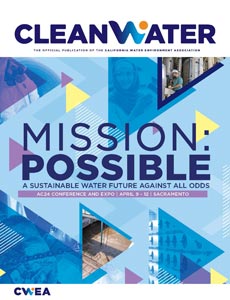Technical Session Proposal
Water Resource Recovery Facilities
Impacts of Advanced Primary Treatment on the Modified Ludzack-Ettinger Advanced Secondary Process
Thursday, April 11, 2024
1:55 PM - 2:45 PM
Location: A5-A6

Onder T. Caliskaner (he/him/his)
President
Caliskaner Water Technologies, Inc.
Woodland, California
Michael Walkowiak, PE, ENV SP
Managing Principal
Brown and Caldwell
Walnut Creek, CA
Lead Presenter(s)
Track Lead(s)
Presentation Description: Raw wastewater contains significant chemical energy [e.g., ~1.8 kWh/lb chemical oxygen demand (COD)] which can be recovered at Water Resource Recovery Facility (WRRFs) to achieve energy self-sufficiency. However, conventional wastewater treatment utilizes low-efficiency conventional primary treatment (CPT) and high-energy-consuming conventional secondary treatment (CST), resulting in a major energy burden. By improving both treatment stages, WRRFs could operate beyond energy neutrality and into net energy production. Understanding this opportunity, several advanced primary treatment (APT) and advanced secondary treatment (AST) technologies have been developed for implementation at WRRFs. APT technologies such as filtration and micro-screening are the key strategic processes in bringing about energy reduction and resource recovery. Additional benefits can be realized when APT is coupled with an effective AST (e.g., Aerobic Granular Sludge, Microvi, Membrane Aerated Bioreactor) for residual carbon and nutrients removal.
In this 3-year long comprehensive technology development and demonstration project, the performances of four advanced primary treatment (APT) technologies including Cloth Disk Primary Filter (CDPF), Compressible Medium Biofilter (CMBF), Micro-Screen (MS) and Proteus Filter were evaluated while they are all operated in parallel with CPT at Linda County Water District's WWRF located in Olivehurst, CA. The project was funded by the California Energy Commission and involves participation from seven manufacturers, several academical institutions, and multiple utilities.
Observed performances of APT technologies have been very promising and significant for decarbonization and intensification of WRRFs. Compared to primary clarifier which achieved 55% removal for total suspended solids (TSS) and 30% removal for chemical oxygen demand (COD), both CDPF and CMBF demonstrated significantly higher removal performances. The CDPF achieved approximately 80% removal for TSS and 50% removal for COD, while the CMBF achieved 70% removal for TSS and 52% removal for BOD. The MS showed a comparable performance to primary clarifier at a footprint of only 20-30% of primary clarifier. The CDPF and Proteus filter also showed similar significant footprint reduction compared to primary clarifier. To demonstrate the full benefits of advanced wastewater treatment, the impacts of APT on advanced secondary treatment (AST) and conventional MLE process is evaluated in this project.
In this 3-year long comprehensive technology development and demonstration project, the performances of four advanced primary treatment (APT) technologies including Cloth Disk Primary Filter (CDPF), Compressible Medium Biofilter (CMBF), Micro-Screen (MS) and Proteus Filter were evaluated while they are all operated in parallel with CPT at Linda County Water District's WWRF located in Olivehurst, CA. The project was funded by the California Energy Commission and involves participation from seven manufacturers, several academical institutions, and multiple utilities.
Observed performances of APT technologies have been very promising and significant for decarbonization and intensification of WRRFs. Compared to primary clarifier which achieved 55% removal for total suspended solids (TSS) and 30% removal for chemical oxygen demand (COD), both CDPF and CMBF demonstrated significantly higher removal performances. The CDPF achieved approximately 80% removal for TSS and 50% removal for COD, while the CMBF achieved 70% removal for TSS and 52% removal for BOD. The MS showed a comparable performance to primary clarifier at a footprint of only 20-30% of primary clarifier. The CDPF and Proteus filter also showed similar significant footprint reduction compared to primary clarifier. To demonstrate the full benefits of advanced wastewater treatment, the impacts of APT on advanced secondary treatment (AST) and conventional MLE process is evaluated in this project.
Learning Objectives:
- Upon completion, participants will be able to evaluate several advanced primary treatment technologies to achieve energy savings at WRRFs.
- Upon completion, participants will be able to describe the impacts of several advanced primary treatment technologies on conventional and advanced secondary treatment processes for BNR.
- Upon completion, the participants will be able to define the implementation and impacts of several innovative advanced primary and secondary treatment technologies with respect to decarbonization and intensification of WRRFs.

